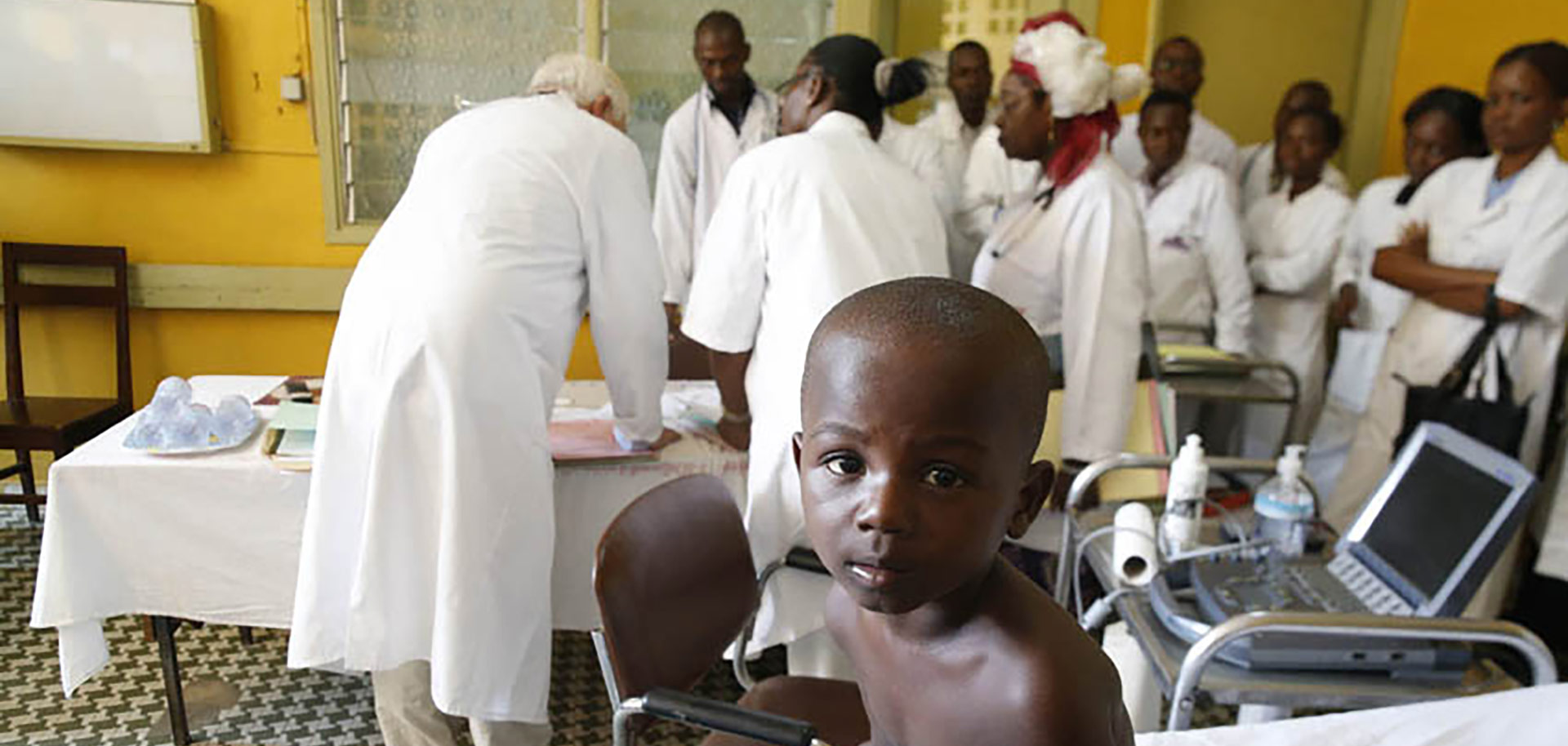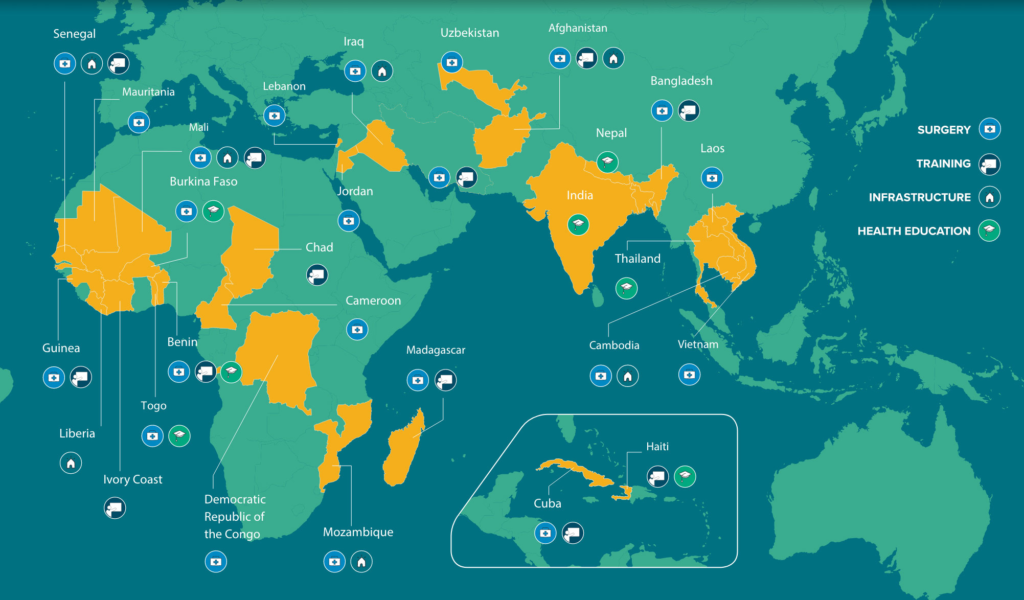
Esophageal Stenosis
In many West African countries, caustic soda is a frequently used chemical. Unfortunately, this chemical is often improperly stored and therefore commonly ingested by children. As a result, this leads to complicated and severe health problems including esophageal stenosis. In the most severe cases, consumption of this chemical by accidental ingestion can require complete replacement of the esophagus. That’s why United Surgeons for Children has spent years in West Africa treating children with this condition. Learn how we do this.

Esophageal Stenosis Causes
Esophageal stenosis is a health complication in which the esophagus narrows, in some cases, so severely that it prohibits ingestion of food or liquids. For those who are curious about esophageal stricture vs stenosis, the condition is one in the same. Aside from the ingestion of caustic soda, esophageal stenosis causes can include:
- GERD
- Cancer
- Ulcers
- Allergic reactions to chemicals
- Inflammation as a result of injury
Since our first mission in April 2017, we’ve been able to organize four missions to the region. In addition to these missions, we plan on making three trips in 2021. Prof. Christophe Chardot, visceral pediatric surgeon, and Dr. Rémi Dubois, pediatric surgeon will be leading our missions in 2021. During this time, they’ll be working in two operating rooms performing anywhere from 7-12 esophageal replacements each.
Treating Esophageal Stenosis in Babies & Children
Prof. Sylvia Da Silva: “This condition is a burn of the esophagus due to caustic products. Our patients are children who inadvertently ingested caustic soda, causing burns and destruction of the esophagus. Thus, these children are incapable of eating or drinking. There are two types of treatment for these conditions, depending on the severity of the injury. When the injury is moderate, the treatment consists of expanding the esophagus with very specific medical tools. This intervention is made by endoscopy, with a camera that is inserted inside the mouth and the esophagus, hence allowing our doctors to see inside. The second possibility, which is the most complex, consists of replacing the esophagus with a piece of the intestine to recreate a digestive circuit that allows children to feed themselves again.”
Ramatolaye Sané, Mother of Tekalign: “Today I am full of joy, I can say I am the happiest mother. For more than three years my son couldn’t eat. Today he can eat, he can drink, he can play, he is happy. And so am I! Nothing can delight a mother more than to see her child happy. I want to say thank you to all the doctors of USFC.”
Insights from Prof. Chardot on Treatment
Prof. Chardot has years of experience treating caustic stenosis on behalf of USFC. When asked about the treatment, he shared the following methods:
Step 1: Perform a Gastrostomy
In particular, a gastrostomy is a surgical procedure where a tube is placed through the abdomen into the stomach. Specifically, this procedure allows time for the lesions and inflammation to regress. Generally, this will take about 8 to 12 months.
Step 2: Assess Options
Following the gastrostomy and waiting period, Prof. Chardot evaluates the spread of the lesions. For example, if the stenosis is localized to a small region in the esophagus, we utilize a dilatation treatment. Generally, this consists of inflating the esophagus with instruments to dilate the stenosis.
However, if the lesions are extensive we must consider replacing the esophagus. This is when we replace the esophagus with a piece of the left colon. Prof. Chardot explains the goal is, “to recreate a tube capable of ensuring the transit of swallowed food.”

How You Can Help These Children
There are nearly 20 children in countries such as Guinea, Ghana, Cameroon, Mali, & Senegal waiting for an esophageal stenosis treatment. Above all, USFC wants nothing more than to be able fight esophageal stenosis in babies & children who have consumed caustic soda. However, without contributions from people like you, we can’t do so. Please consider giving a gift to the United Surgeons for Children so we can give the gift of a better life to a child.

